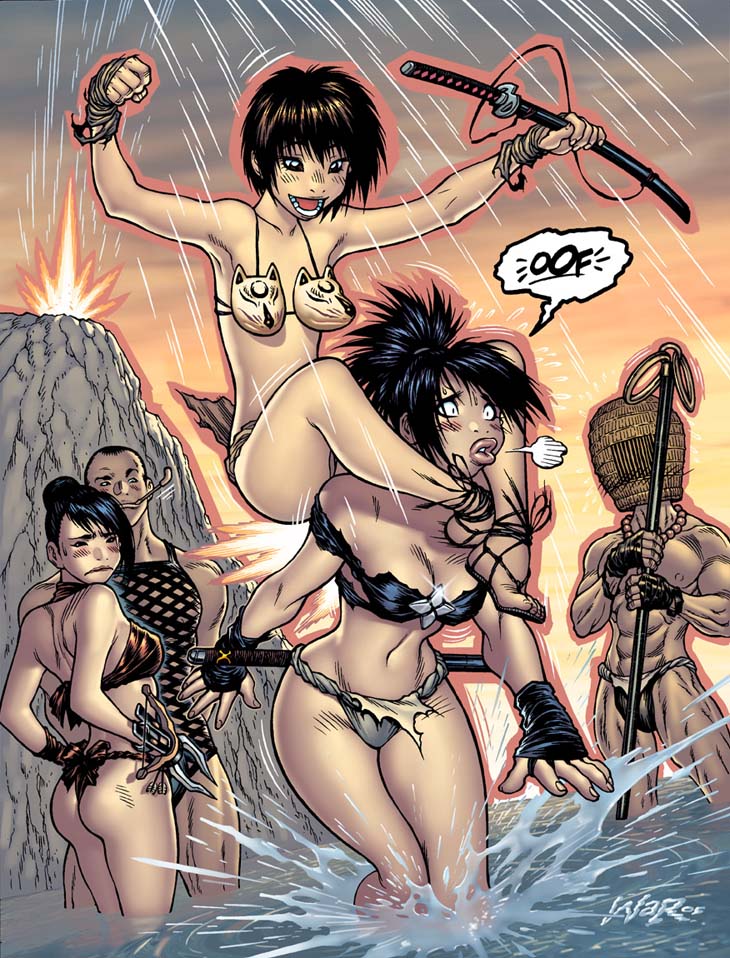With this page, we see both of my two favorite types of comic panels on display: wide, panoramic, horizontal panels and smaller, narrow, vertical ones. Panoramic panels are the most versatile of all, as they’re unbeatable for “set-the-scene” establishing shots, great for tight close-up shots—while leaving room for dialogue on either side—and their shape automatically generates the left-to-right movement essential for good action shots. Their only real flaw is that they take up a larger proportion of the comic page than other types do, even when you deploy my beloved “five panoramic panels per page” layout. Ah, but this is where the narrow, vertical panel rides to the rescue, as a single tier of them—as seen in panels 3-6, here—can deliver a rapid-fire volley of storytelling in comparatively little space. Plus, the shape of our tall, skinny friend lends itself to word-balloon placement—just slap that pesky ol’ dialogue in at the top of the panel, letterers! (Er, assuming the comic’s artist actually bothered to leave room for the lettering, which is often not the case nowadays.)
Side note: Word-balloon placement becomes considerably more problematic with panels of a more squarish shape, which is a layout that doesn’t automatically lend itself to easy dialogue placement in the way that vertical or horizontal panels do. In fact, I’m fairly sure that I mainly use square-shaped panels for big, important, “look at this!” images taking up a big chunk of the page. My hat is off to artists—such as my friend Carla Speed McNeil, of Finder fame—who are able to lay out entire books relying on squarish panel types, but I’ve never been too comfortable with those blocky shapes, myself.
Panel 1: As mentioned before, Ninjette is playing one of the ninja videogames in the Tenchu series for the Playstation 1 and 2. I tend to think she might be struggling through one of the PS1 iterations of the franchise, as I vaguely recall experiencing far worse camera issues with the older games, unsurprisingly enough. (Well, maybe.) Still, I did dearly love those old games, regardless of the seemingly treacherous wonkiness of their in-game cameras.
Panel 4: The TV Tropes term for this sort of image conveying visible dejection—a old riff I borrowed from roughly a bajillion different manga—is “Corner of Woe.” http://tvtropes.org/pmwiki/
Panel 6: In terms of character selection, Tenchu-wise, I always preferred playing the quick, agile Ayame over the slow, lumbering but powerful Rikimaru. Apparently other players shared my opinion, as I poor ol’ Riki—or another brawny male replacement—didn’t appear in the last version of the game I played, Tenchu: Fatal Shadows. Instead, both playable characters were kunoichi (female ninja)—the returning Ayame and new protagonist Rin. In fact, below is a 2006-ish “swimsuit illo” I drew for the gaming magazine PSM, featuring Ayame, Rin and other characters from the Fatal Shadows cast:

Pencils and inks by yrs truly, color art by my buddy Ryan Kinnaird.
-Adam Warren









